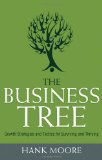The Big Picture of Business: The Business Leader as Community Leader
In eras following downturns and scandals, it is incumbent upon good companies to go the extra distance to be ethical and set good examples. Demonstrating visible caring for communities by company executives is the ultimate form of potlache.
No matter the size of the organization, goodwill must be banked. Every company must make deposits for those inevitable times in which withdrawals will be made.
To say that business and its communities do not affect each other is short-sighted… and will make business the loser every time. Business marries the community that it settles with. The community has to be given a reason to care for the business. Business owes its well-being and livelihood to its communities.
Business leaders have an obligation to serve on community boards and be very visible in the communities in which they do business. If done right, community stewardship builds executives into better leaders, as well as receiving deserved credit for the company. Civic service is the ultimate way to steer heir apparents toward the leadership track.
Communities are clusters of individuals, each with its own agenda. In order to be minimally successful, each company must know the components of its home community intimately. Each company has a business stake for doing its part. Community relations in reality is a function of self-interest, rather than just being a good citizen.
Companies should support off-duty involvement of employees in pro bono capacities but not take unfair credit. Volunteers are essential to community relations. Companies must show tangible evidence of supporting the community by assigning key executives to high-profile community assignments. Create a formal volunteer guild, and allow employees the latitude and creativity to contribute to the common good. Celebrate and reward their efforts.
Publicity and promotions should support effective community relations and not be the substitute or smokescreen for the process. Recognition is as desirable for the community as for the business. Good news shows progress and encourages others to participate.
The well-rounded community relations program embodies all elements: accessibility of company officials to citizens, participation by the company in business and civic activities, public service promotions, special events, plant communications materials and open houses, grassroots constituency building and good citizenry.
No entity can operate without affecting or being affected by its communities. Business must behave like a guest in its communities, never failing to give potlache or return courtesies. Community acceptance for one project does not mean than the job of community relations has been completed. It is not ‘insurance’ that can be bought overnight. It is tied to the bottom line and must be treated accordingly, with the resources and expertise to do it effectively. It is a bond of trust that, if violated, will haunt the business. If steadily built, the trust can be exponentially parlayed into successful long-term business relationships.
Potlache
Potlache is the ultimate catalyst toward Customer Focused Management. It means extra gifts, beyond value-added, visionary mindset and the ultimate achievement of the organization.
The word ‘potlache’ is a native American expression, meaning ‘to give’. For American Indians, the potlache was an immensely important winter ceremony featuring dancing, food and gift giving. Potlache ceremonies were held to observe major life events. The native Americans would exchange gifts and properties to show wealth and status. Instead of the guests bringing gifts to the family, the family gave gifts to the guests.
Colonists settled and started doing things their own way, without first investigating local customs. They alienated many of the natives. Thus, the cultural differences widened. The more diverse we become, the more we really need to learn from and about others. The practice of doing so creates an understanding that spawns better loyalty.
When one gives ceremonial gifts, one gets extra value because of the spirit of the action. The more you give, the more you ultimately get back in return. Reciprocation becomes an esteemed social ceremony. It elevates the givers to higher levels of esteem in the eyes of the recipients.
Potlache is a higher level of understanding of the business that breeds loyalty and longer-term support. It leads to increased quality, better resource management, higher employee productivity, reduced operating costs, improved cash management, better management overall and enhanced customer loyalty and retention.
Community Relations
The well-rounded community relations program embodies all elements: accessibility of company officials to citizens, participation by the company in business and civic activities, public service promotions, special events, plant communications materials and open houses, grassroots constituency building and good citizenry.
Never stop evaluating. Facts, values, circumstances and community composition are forever changing. The same community relations posture will not last forever. Use research and follow-up techniques to reassess the position, assure continuity and move in a forward motion.
Companies need community relations at all times:
- Prior to coming into locales.
- Every year in which they do business there…in good and bad economic times.
- When they are leaving an area.
- Even after they have ceased operation in certain communities.
In today’s economy, no business can operate without affecting or being affected by its communities. Business must behave like a guest in its communities… never failing to show or return courtesies.
Community acceptance for one project does not mean than the job of community relations has completed. Programs always shift into other gears… breaking new ground.
Community relations are not ‘insurance’ that can be bought overnight. It is tied to the bottom line and must be treated accordingly… with resources and expertise to do it effectively. It is a bond of trust that, if violated, will haunt the business. If steadily built, the trust can be exponentially parlayed into successful long-term business relationships.
About the Author


 StrategyDriven Podcasts focus on the tools and techniques executives and managers can use to improve their organization’s alignment and accountability to ultimately achieve superior results. These podcasts elaborate on the best practice and warning flag articles on the StrategyDriven website.
StrategyDriven Podcasts focus on the tools and techniques executives and managers can use to improve their organization’s alignment and accountability to ultimately achieve superior results. These podcasts elaborate on the best practice and warning flag articles on the StrategyDriven website.